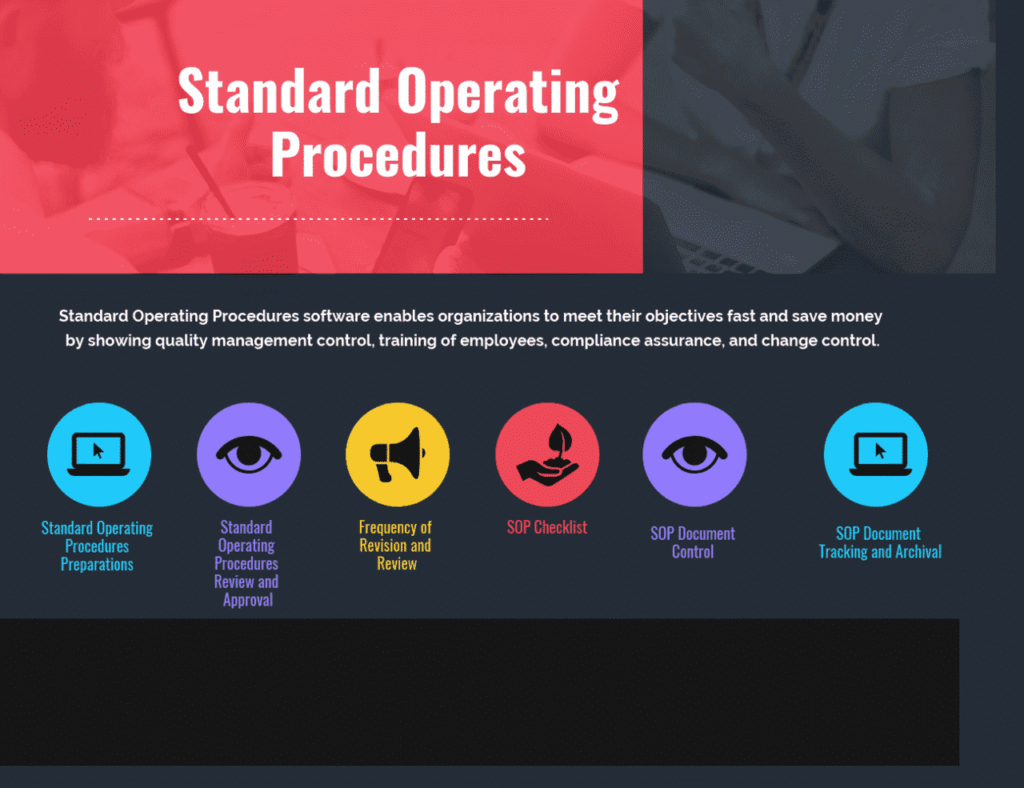Every successful organization, regardless of its size or industry, thrives on efficiency, clarity, and consistency. One essential tool that supports these pillars is the protocolo operacional padrão, or standard operating protocol (SOP). It is more than a document — it’s a roadmap that ensures every action aligns with the organization’s objectives and quality standards.
This comprehensive guide explores what a protocolo operacional padrão is, why it matters, how to design one effectively, and how it impacts long-term performance and compliance.
Understanding the Protocolo Operacional Padrão
A protocolo operacional padrão (POP), or standard operating protocol, is a structured document that outlines the precise steps required to perform a particular process or task within an organization.
Its purpose is to guarantee that every employee performs the task in the same, correct, and efficient way — minimizing variation, improving productivity, and maintaining compliance with regulations or standards.
The concept may sound simple, but its impact is profound. When properly applied, a POP becomes the backbone of quality control and process excellence.
Importance of the Protocolo Operacional Padrão in Business Operations
The protocolo operacional padrão ensures that operations are consistent and predictable. In any setting — from healthcare and manufacturing to administration and education — consistency saves time, money, and reputation.
Some major advantages include:
-
Process Standardization: Defines clear steps for performing recurring tasks.
-
Error Reduction: Decreases the likelihood of mistakes caused by miscommunication or misunderstanding.
-
Faster Training: Serves as an essential guide for new hires.
-
Audit and Compliance: Ensures adherence to industry regulations and standards.
-
Enhanced Efficiency: Streamlines workflow, reducing duplication and downtime.
Ultimately, an SOP fosters a culture of accountability and operational excellence.
How to Create a Protocolo Operacional Padrão
Building a strong protocolo operacional padrão requires planning, collaboration, and clarity. Below is a practical guide for creating one that works effectively in any environment.
Step One: Analyze and Map the Process
Start by understanding the existing workflow. Observe how tasks are currently performed, identify inefficiencies, and document the ideal process flow.
Step Two: Define Responsibilities
Each procedure must clearly identify the responsible parties — who performs, supervises, and verifies each task.
Step Three: Write in Simple and Clear Language
Use short sentences and active verbs. Avoid technical jargon unless necessary. The clearer the instructions, the easier they are to follow.
Step Four: Review and Validate
Before implementation, review the POP with stakeholders and subject matter experts to ensure accuracy and completeness.
Step Five: Train Your Team
Employees should be trained on how to use the POP effectively. Training ensures consistency across all shifts and teams.
Step Six: Monitor and Update
SOPs should evolve as processes or technologies change. Establish regular review intervals to keep them relevant and effective
Best Practices for Implementing the Protocolo Operacional Padrão
Creating a POP is only the first step — proper implementation is what drives results. Here are proven best practices:
-
Engage the Team: Involve employees in drafting and testing protocols.
-
Keep It Accessible: Make sure the POP is easy to find — digitally or physically.
-
Visual Clarity: Use bullet points, diagrams, or flowcharts for complex steps.
-
Regular Training: Reinforce procedures through periodic workshops.
-
Continuous Improvement: Encourage feedback and suggestions for improvement.
The key is to transform the POP from a static document into a living, practical resource.
Common Mistakes in Applying the Protocolo Operacional Padrão
Even with the best intentions, organizations can misuse or overlook their protocols. Some of the most common errors include:
-
Writing procedures that are too general or vague.
-
Failing to update protocols as processes evolve.
-
Not training employees effectively.
-
Keeping documents hidden or inaccessible.
-
Ignoring input from those who perform the tasks daily.
Avoiding these mistakes ensures that your SOP remains a functional tool — not a forgotten file.
Protocolo Operacional Padrão in the Healthcare Sector
In healthcare, a protocolo operacional padrão is more than a formality — it’s a lifeline.
Medical and laboratory environments depend on precision, hygiene, and regulatory compliance. SOPs here ensure that every step, from equipment sterilization to patient data recording, follows strict standards.
Proper implementation reduces human error, improves patient safety, and supports certification requirements such as ISO 9001 and local health authority regulations.
Protocolo Operacional Padrão in Industry
Industrial operations rely heavily on consistency. A single deviation in manufacturing can lead to waste or product defects.
By adopting a protocolo operacional padrão, industries standardize production, minimize waste, and ensure high product quality.In sectors like food, pharmaceuticals, and electronics, adherence to POPs is not just beneficial — it’s mandatory.
Protocolo Operacional Padrão in Administration and Services
Service-based companies and public institutions also gain from SOPs.
Administrative protocols streamline tasks such as document handling, customer service, and reporting. The result is faster response times, greater transparency, and improved service quality.
Digital Tools to Manage the Protocolo Operacional Padrão
Modern technology has revolutionized how organizations manage their POPs.
Digital document management systems, workflow software, and cloud platforms allow easy access, version control, and collaboration.
Benefits of digital POPs include:
-
Instant access for remote teams.
-
Automatic version tracking.
-
Reduced paper usage.
-
Simplified audit preparation.
By digitizing the protocolo operacional padrão, companies enhance efficiency and sustainability simultaneously.
Example of a Standard Operating Protocol
Here’s a simplified example of a POP for equipment cleaning in a laboratory:
Objective: Ensure all laboratory equipment is properly cleaned to prevent contamination.
Responsible: Lab technician.
Procedure:
-
Turn off the equipment and disconnect it.
-
Clean all surfaces using an approved disinfectant.
-
Rinse with sterile water and dry.
-
Record cleaning completion in the maintenance log.
Quality Criteria: No visible residues; all records completed.
This example demonstrates how specific and direct an SOP should be.
Benefits of Having a Protocolo Operacional Padrão
The rewards of implementing a protocolo operacional padrão are long-term and far-reaching:
-
Improved Quality Control: Ensures uniformity in results.
-
Operational Efficiency: Saves time and reduces resource waste.
-
Employee Accountability: Defines clear responsibilities.
-
Compliance Assurance: Simplifies external audits.
-
Enhanced Customer Satisfaction: Consistent processes lead to reliable outcomes.
When every team member knows exactly what to do and how to do it, productivity soars.
Challenges in Maintaining the Protocolo Operacional Padrão
Despite its advantages, maintaining effective POPs requires effort.
Organizations must dedicate time and resources to keep them updated and ensure full adoption. The biggest challenge is maintaining engagement — people often resist change or see documentation as unnecessary bureaucracy standard operating protocol.
Overcoming this mindset requires leadership commitment and continuous reinforcement of the protocol’s value.
Integrating the Protocolo Operacional Padrão into Corporate Culture
For an SOP to succeed, it must become part of the organizational culture.
Leaders should promote it as a symbol of quality and reliability rather than a restriction. Recognition programs for compliance, transparent communication, and consistent feedback can strengthen this culture of excellence.
Frequently Asked Questions about Protocolo Operacional Padrão
What is the main goal of a protocolo operacional padrão?
To ensure tasks are performed consistently and correctly, maintaining quality and compliance.
Who creates the SOP?
Usually, managers and technical experts collaborate to design the protocol based on real workflow analysis.
How often should a POP be updated?
Every 6 to 12 months, or whenever significant process changes occur.
Are SOPs legally required?
In some sectors, yes — especially healthcare, manufacturing, and food industries.
Can digital SOPs replace printed versions?
Yes, provided digital access is secure, traceable, and compliant with data regulations.
What’s the difference between a POP and a manual?
A POP focuses on one process; a manual combines several POPs within an area or department.
Conclusion
The protocolo operacional padrão is far more than a written guideline — it’s a foundation for operational excellence.
By standardizing activities, it strengthens quality, safety, and efficiency across the organization. Whether in hospitals, factories, or offices, SOPs ensure that every process runs smoothly and consistently.
When properly implemented, the POP becomes a living document — continuously improving alongside the company, empowering teams, and driving long-term success.







